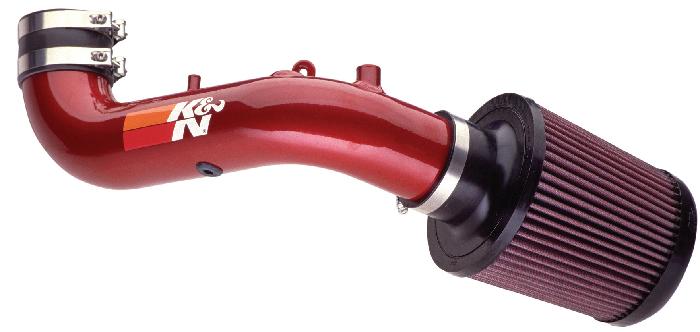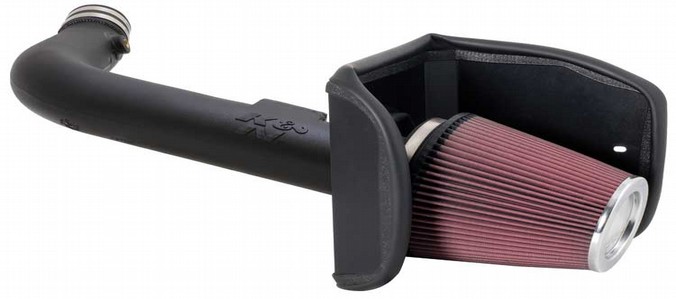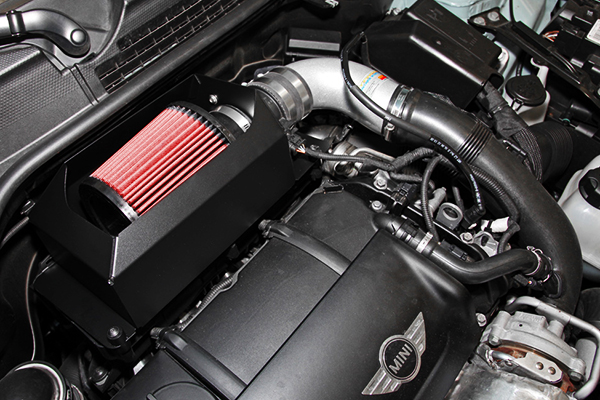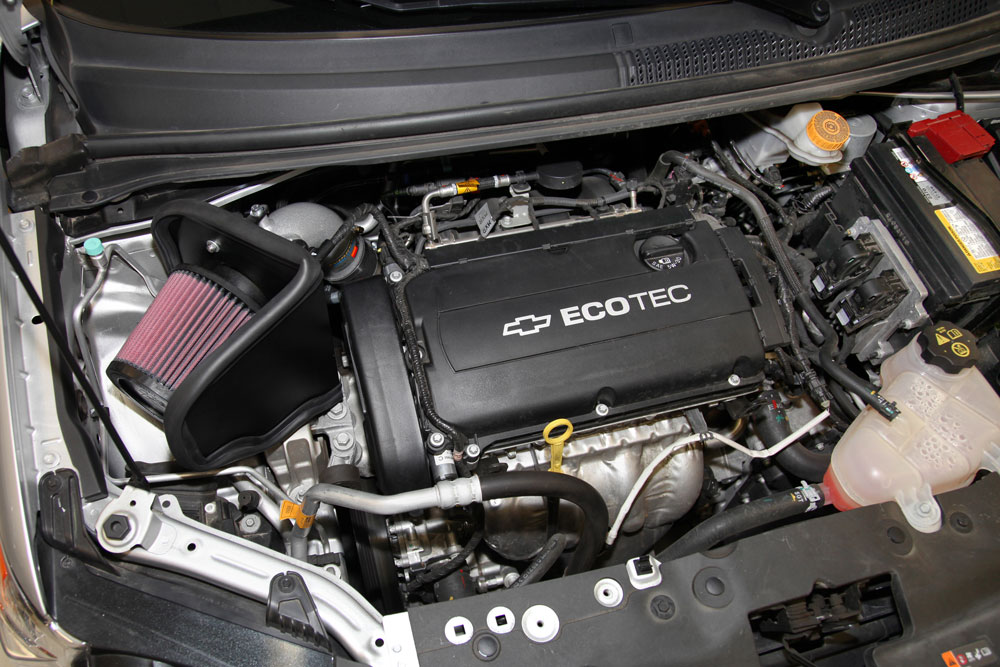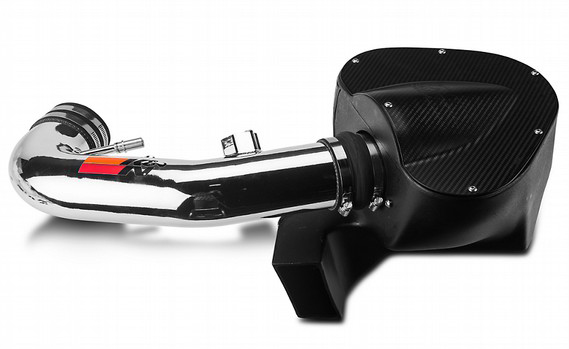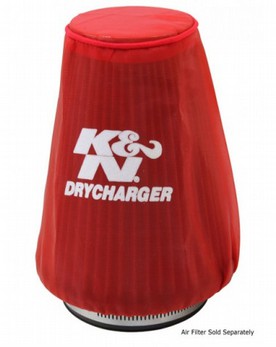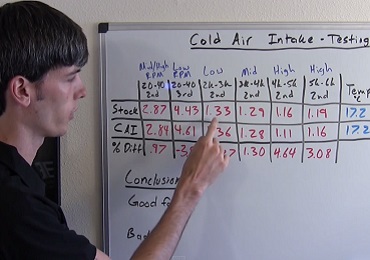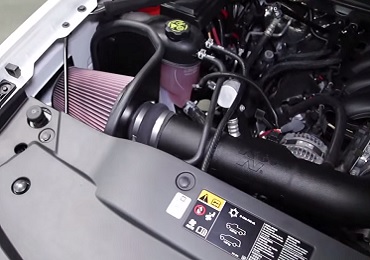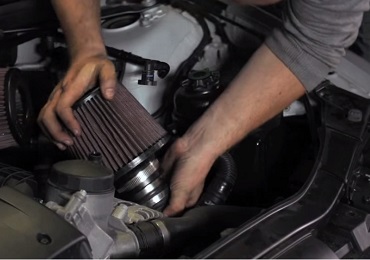How does air intake work?
The mechanics of the cold air intake follows one very simple physical principal - the cold air has a higher density for a given volume. It is known that the combustion requires oxygen and the more air you give into the combustion process the more power you will get from it. Designers came to the solution that if they take the air from around the vehicle it will be cooler than the one in the combustion area and this will provide more oxygen. This is why there is an air intake tube that intakes the air from a place more distant to the one where the combustion process happens and where the heat is higher.
However the higher the resistance of the tube is the warmer the air will get because of the air-dynamical friction. To ensure little friction the designers sometimes increase the diameter of the air intake available component and this provides more airflow with decreased friction. It is possible for the diameter to be increased but it can't be increased too much because it will become too big. That's why another strategy comes into play. By smoothing the internal side of the intake tube the turbulence of the air is reduced and with this - the air-dynamical friction is reduced. More direct route for the air could be possible in some cases and it could provide even greater results. Some manufacturers redesign their air filters too with the goal of reducing their air resistance.
The intake snorkel is an opening in which the intake of the air happens. In order to maintain sufficient airflow no matter of the current throttle the intake snorkel should be large enough and it is usually calculated for full throttle. There is no need for further automatic systems to enhance its parameters because even if less air is required it will still be no problem to have more. The intake opening should not be too large because sometimes efficiency could be lost due to this. If there are no other restrictions for the airflow the intake opening should be with the diameter of the tube. Some resistances of the system could enforce the need for bigger diameter of the intake opening but this should be properly calibrated.
Cold air intake solutions
One good solution for the intake is the use of a heat shield. This part is designed to isolate the air filter from the rest of the engine compartment and enables the air to come in with lower temperature. Usually this air is taken from the front side of the engine bay.
Some manufacturers use carbon fiber for custom air intakes and this provides a nice looking of the final product. The Carbon fiber has better temperature isolation parameters and in some cases it helps for the isolation of the air filter. It reduces the weight of the car too because it is less heavy than the metal. However the Carbon fiber is an expensive material. In many cases it gives just a better look to the car without actually doing much good.
One pretty extreme solution for high performance air intake system is called CCA or Complete Cold Air. It usually requires some modifications to the body of the car. The idea is that the air is taken from the hood scoop or wheel wells. The air in these places is with high velocity and that pressurizes it which rapidly reduces its temperature. This solution for cold air intake system is called ram-air intake and it is applied for high performance vehicles like race cars or motorcycles.
Engine hydrolock and how to avoid it
You could just be careful and avoid raining days or maybe drive slower but usually it doesn't help you much because when you are in a hurry you can't always think about avoiding engine hydrolock. After all your car should work for you - not the opposite. That's why some precautions are required. The first precaution that comes in mind is not to drive in a rainy day at all but since that is usually not an option let's take a look into some better solutions. The first simple but efficient solution that helps to avoid hydrolock is called hydro-shield and it is actually a simple piece of plastic that blocks all water from entering into the air filter. Today K&N, one of the leading performance air intake manufacturers. offers one pretty nice solution too called "Drycharger" which is not too expensive and it could save you a lot of troubles.
When using air intakes there should be one word always staying into your mind when you drive in a rainy day. That word is "hydrolock". It happens when water is sucked through the air intake tube. It will most likely leave you from less to no horsepower at all. Water is not like air and it will not compress which could allow for it to raise its velocity. When the velocity reaches critical state the so called "hydraulic blow" appears and out the blue it breaks the connecting rods in the pistons.
